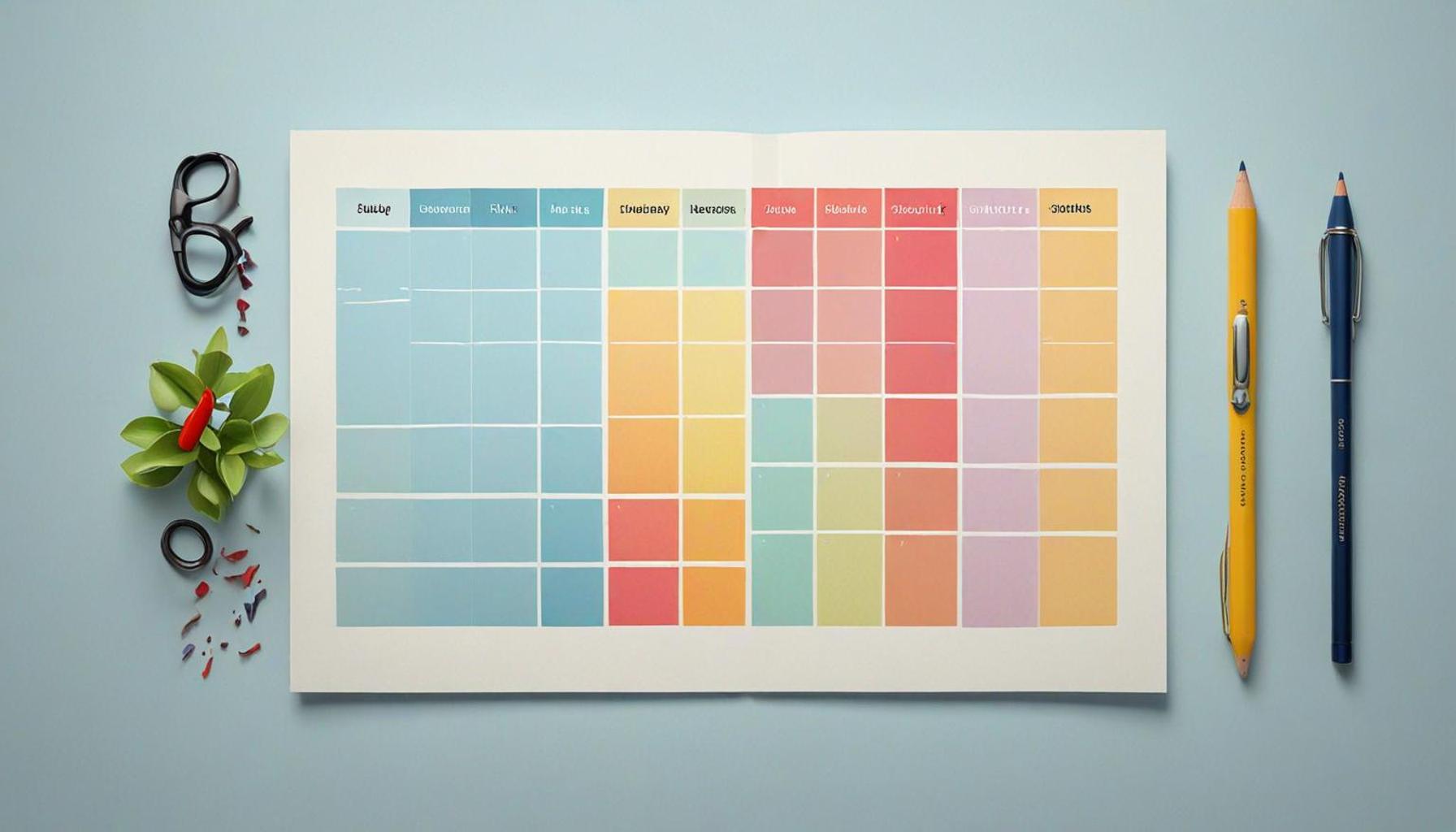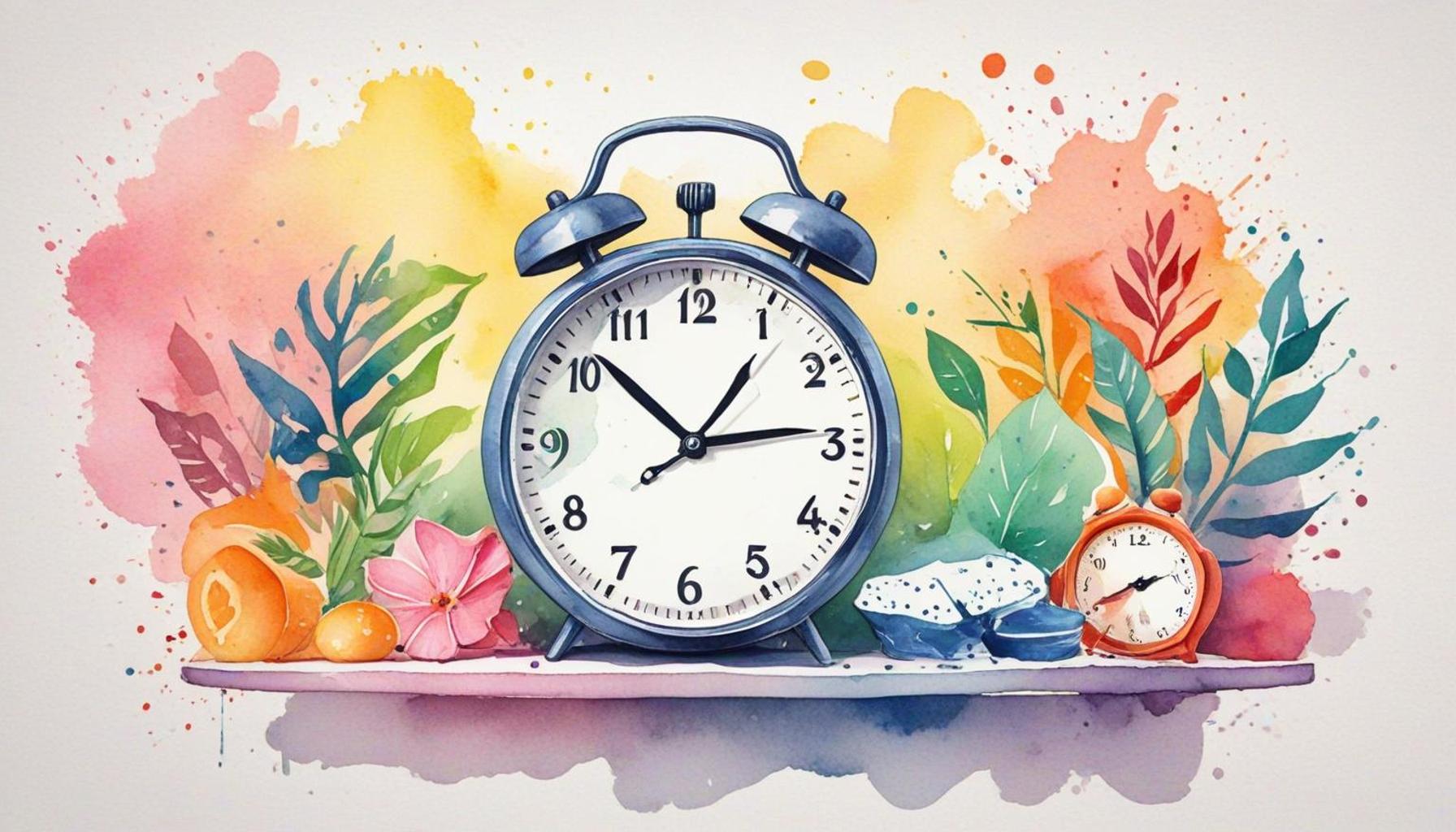The Balance Between Work and Personal Life: Minimalist Strategies for Healthy Time Management

Finding Harmony in a Hectic World
The modern lifestyle often blurs the lines between work and personal life. With the rise of remote work and constant connectivity, many Americans grapple with maintaining a healthy balance. This challenge can lead to burnout and stress, highlighting the necessity for effective time management strategies that can help restore equilibrium in our daily routines.
Understanding the Stakes
- Overworking can negatively affect mental health, contributing to anxiety, depression, and a host of physical ailments. According to a study by the World Health Organization, workplace burnout is a legitimate medical diagnosis recognized globally.
- A healthy work-life balance supports productivity and creativity. Research shows that employees who prioritize their personal lives report higher job satisfaction and are more engaged in their work. This dual focus often leads to innovative ideas and improved problem-solving abilities.
- The inability to disconnect can strain relationships. Data from the American Psychological Association indicates that work-related stress spills over into personal relationships, leading to increased conflict and decreased satisfaction at home.
Exploring minimalist strategies offers a pathway to restoring equilibrium. By simplifying routines and eliminating distractions, individuals can focus on what truly matters. Here are some intriguing methods gaining traction among those striving for balance:
- Utilizing time-blocking techniques for better scheduling. This method involves dividing your day into distinct blocks dedicated to different tasks, allowing for focused work periods that can increase efficiency and minimize procrastination.
- Establishing tech-free zones during personal time is crucial. Designate areas in your home where devices are not allowed, creating a sanctuary for relaxation, reading, or spending quality time with loved ones without the distractions of notifications.
- Practicing mindfulness to stay present in each moment can help mitigate stress. Techniques like meditation or deep-breathing exercises foster a greater awareness of your thoughts and feelings, enabling you to approach both work and personal activities with renewed clarity and intention.
As you navigate your daily commitments, it’s vital to prioritize both work and personal fulfillment. Whether it’s through structured schedules or intentional disconnects from tech, the strategies you choose to implement can significantly impact your quality of life. Join us in discovering effective minimalist strategies designed to foster a sustainable approach to time management. The balance you seek might just be a few intentional choices away, paving the way for both productivity and peace in a hectic world.
DIVE DEEPER: Click here to learn more
Implementing Minimalist Strategies for Effective Time Management
In the quest for a balanced life between work and personal commitments, minimalism emerges as a practical approach to simplify our choices and enhance our well-being. This philosophy emphasizes the importance of quality over quantity, especially regarding how we allocate our time. As many professionals find themselves stretching their hours, the intentional design of a day can make a significant difference in cultivating a life rich in both productivity and fulfillment.

Time-Blocking: Harnessing Focus and Efficiency
One of the cornerstone techniques of minimalist time management is time-blocking. This strategy involves dedicating specific chunks of time to tackle particular tasks or projects, thereby creating a structured environment that encourages concentration. Instead of letting the day dictate your tasks, you take control by organizing your schedule. For instance, you might allocate two uninterrupted hours in the morning solely for focused work, followed by a 30-minute break to recharge. This not only boosts efficiency but also slashes the likelihood of multitasking, which studies indicate can reduce productivity by as much as 40%.
To implement time-blocking effectively:
- Prioritize Tasks: Begin each week by identifying key tasks and categorizing them based on urgency and importance. This clarity helps you allocate appropriate time blocks.
- Limit Distractions: When a time block is designated for a specific task, silence notifications and set clear boundaries to minimize interruptions.
- Be Realistic: Allow for breaks between blocks to enhance mental agility and prevent burnout, especially during long work sessions.
Creating Tech-Free Zones
As digital devices become ever-present, separating work from personal life can be tough. Establishing tech-free zones in your home or during certain hours can help in reclaiming personal time. By allocating specific areas where devices are not allowed, you create sacred spaces for personal interactions or relaxation. For example, you might designate your dining room as a tech-free area to enhance family conversations during meals, or plan a daily evening hour where you disconnect from screens to engage in reading, hobbies, or meditation.
This deliberate disconnect not only reduces dependence on technology but also allows for increased presence during personal time. Research demonstrates that individuals who set boundaries with their devices report improvements in both relationship satisfaction and personal well-being.
As you embrace minimalism in your daily routines, remember that balance is a dynamic state influenced by conscious choices and consistent practices. By adopting techniques like time-blocking and creating tech-free zones, you set the stage for a rejuvenated approach to work and personal life. This intentional regulation of how you manage time allows for deep fulfillment and productivity, leading you closer to the harmony you seek.
The Balance Between Work and Personal Life: Minimalist Strategies for Healthy Time Management
When it comes to achieving a harmonious balance between work and personal life, minimalism has emerged as a powerful approach. By simplifying your commitments and decluttering your schedule, you can create more space for what truly matters. One key strategy is to prioritize your tasks using the 80/20 principle, also known as the Pareto Principle. This principle suggests that 80% of your results come from 20% of your efforts. By identifying and focusing on the most impactful tasks, you can reduce stress and increase productivity while carving out time for personal pursuits.Another compelling minimalist strategy is to implement time-blocking techniques. This involves allocating specific time slots for work-related tasks as well as personal activities. By defining boundaries between work time and personal time, you can foster a sense of routine that promotes mental clarity and enhances overall well-being. For instance, scheduling a daily walk or meditation session can serve as an effective reset, allowing for improved focus when returning to work tasks. Additionally, embracing a digital detox can profoundly impact your time management. The constant ping of notifications often leads to distractions and diminished quality of work. Setting aside designated times for technology use can help to enhance your concentration and free up more valuable time for personal experiences and relationships.Incorporating these minimalist strategies into your daily life can transform your approach to time management, leading to a fulfilling balance between your work obligations and personal interests.
| Category | Benefits |
|---|---|
| Prioritization | Focus on high-impact tasks to improve productivity. |
| Digital Detox | Reduce distractions to enhance focus on work and personal tasks. |
| Time-Blocking | Establish clear boundaries between work and personal time. |
| Mindfulness Practices | Foster mental clarity and reduce stress through activities like meditation. |
By integrating these strategies, you not only enhance your ability to manage time effectively but also improve your quality of life. Exploring these techniques can ultimately lead to a more gratifying balance between your professional and personal endeavors.
DISCOVER MORE: Click here to find out how to optimize your workspace
Establishing Boundaries: The Key to Mindful Living
Another fundamental strategy for achieving a harmonious balance between work and personal life is establishing boundaries. In an age where flexibility often leads to blurred lines between home and office, setting clear limits is essential to protect your time and energy. Deciding when your work starts and ends, along with how available you are to colleagues and clients, will set a precedent for both your professional and personal interactions.
Communicate Expectations
Effective communication plays a crucial role in boundary setting. Not only do you need to define your own limits, but you also must convey them to your coworkers and supervisors. By openly discussing your availability and preferred working hours, you foster understanding and respect for your personal time. This approach helps cultivate a workplace culture that values work-life balance.
- Set Office Hours: Clearly state the hours you are reachable and when you will be unavailable for work-related matters. This step helps in minimizing unexpected calls or emails after hours.
- Use Out-of-Office Notifications: During vacation or personal time, utilize automatic email replies to inform individuals of your absence and when they can expect a response. This acts as a reminder of your commitment to personal time.
- Respect Others’ Boundaries: Encourage colleagues to communicate their own limits as well. This reciprocal recognition fosters a stronger team dynamic and enhances mutual respect.
Integrating Mindfulness Practices
Lorem Ipsum blends seamlessly with time management techniques, further enriching the minimalistic approach. Incorporating mindfulness practices into your daily routine provides a simple yet powerful way to enhance focus and reduce stress. A few minutes dedicated to meditation, deep breathing, or even mindful walking can significantly improve overall well-being.
- Mindful Mornings: Begin your day with a short meditation session or gentle stretching to set a positive and calm tone for the rest of the day.
- Preserved Breathing Breaks: Schedule 5-minute breathing breaks throughout your workday. These moments help center your attention and ease anxiety, allowing for clearer thinking.
- Gratitude Journals: Take a few minutes in the evening to reflect on the day’s achievements and moments of joy. This practice enhances appreciation for both personal and professional aspects of life.
Reevaluating Commitments Regularly
The principle of minimalism encourages us to regularly assess our commitments and obligations. Often, we find ourselves overextended due to the “yes” syndrome, where saying yes to every request compromises what truly matters. By conducting periodic check-ins with ourselves, we can determine which activities deserve our time and which ones can be let go.
Utilizing a simple framework for evaluation can make this process streamlined:
- Assess Value: Consider whether the activity aligns with your values and long-term goals.
- Evaluate Enjoyment: Reflect on the joy or fulfillment each commitment brings; if it creates stress rather than satisfaction, it may be time to reconsider.
- Make Adjustments: Be intentional in adjusting your calendar to reflect changes—eliminating non-essential tasks opens space for what truly matters in your life.
Incorporating these minimalist strategies into your time management approach can serve as a compass guiding you towards a balanced, fulfilling life. By setting firm boundaries, practicing mindfulness, and regularly reassessing commitments, you position yourself to reap the benefits of a life where professional and personal commitments can coexist in harmony.
DIVE DEEPER: Click here to discover more
Conclusion: Embracing Minimalism for a Harmonious Life
Achieving a balance between work and personal life is not just a fleeting desire; it is a necessary foundation for a fulfilling existence. As we navigate the complexities of modern life, adopting minimalist strategies in time management is essential for preserving our well-being. By prioritizing what truly matters, we can create a sense of clarity amidst the chaos.
Establishing boundaries is the cornerstone of this endeavor. Setting clear limits on professional availability fosters an environment where personal time is respected and valued. When we communicate our availability and practice mutual respect with colleagues, we contribute to a healthier workplace culture. Furthermore, integrating mindfulness practices into our daily routines can significantly enhance our ability to focus and manage stress, ultimately leading to improved productivity and satisfaction in both realms of life.
Lastly, the practice of reevaluating commitments regularly allows us to align our activities with our core values and passions. By saying “no” to non-essential tasks, we open ourselves up to opportunities that bring joy and fulfillment, creating more room for what truly enriches our lives.
In conclusion, the path to a balanced life lies in intentionality. By embracing minimalist time management strategies, we can bridge the gap between work and personal commitments, creating a life that not only thrives on productivity but also celebrates personal joy and growth. As we embark on this journey of discovery, let us remain open to adjusting our approach and prioritizing a lifestyle where both our professional aspirations and personal happiness can coexist harmoniously.



